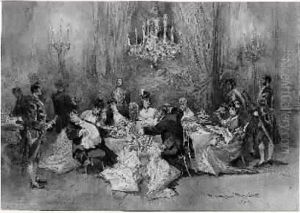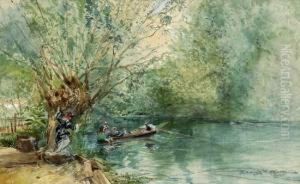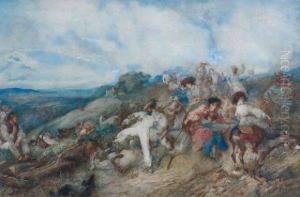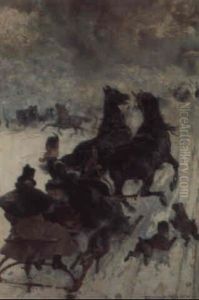Edmond Morin Paintings
Edmond Morin was a French artist known for his contributions as an illustrator, lithographer, and watercolorist. Born in 1824, Morin's artistic career took place during a period of significant social and political changes in France, which influenced the art world profoundly. He developed his artistic skills at a time when lithography was becoming a popular medium for reproducing artworks and illustrations for publication.
Morin's work is notable for its detailed depiction of contemporary life, capturing the nuances of everyday scenes with a keen eye for emotion and social context. He was particularly adept at illustrating books, magazines, and newspapers, contributing to the visual culture of his time. His illustrations often featured scenes of Parisian life, providing a window into the 19th-century urban experience with a depth of feeling and a delicate touch that set his work apart from that of his contemporaries.
Throughout his career, Edmond Morin collaborated with several notable writers and publishers, contributing illustrations to works that remain significant in French literature and history. His ability to convey complex narratives through visual art made him a sought-after illustrator. Morin's illustrations were not only appreciated for their artistic quality but also for how they captured the spirit of the texts they accompanied, enriching the readers' experience and understanding of the stories.
Despite his contributions to the arts, Edmond Morin remains a somewhat obscure figure compared to other artists of his time. His death in 1882 marked the end of a career that, while not as widely celebrated as some of his peers, was nonetheless significant for its impact on the illustration and visual culture of the 19th century. Today, Morin's work is appreciated by art historians and collectors for its insight into the social and cultural life of his era and its embodiment of the technical skills and artistic sensibilities of 19th-century French art.















